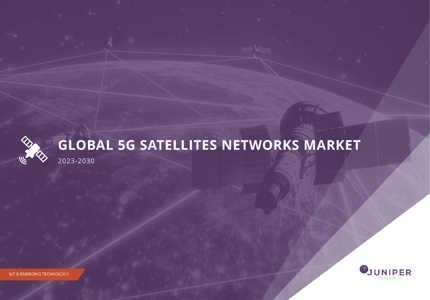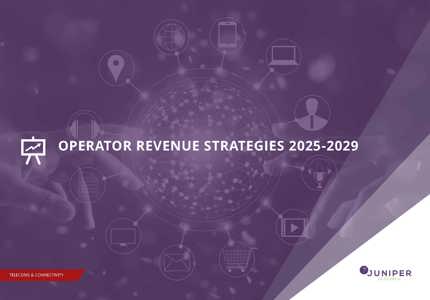Telco Insights - The Federal Communications Commission Issues First Ever Fine for Excessive Space Debris
The fine was handed to Dish, a direct-broadcast satellite provider, as the company failed to properly deorbit its Echstar-7 DBS (Direct Broadcasting Satellite). In this instance, Dish’s Echostar-7 DBA geostationary satellite, originally launched in 2002, was being retired through relocating it to a higher orbit, out of the way from other space users. However, it was discovered that the satellite’s thrusters lacked sufficient propellant to complete this journey, thus rendering it a dangerous piece of space debris.
With this, the FCC has advised that proposals for future space operations must be designed to ensure that the increased number of satellites being launched into orbit has the capabilities to be safely deorbited at the end of the mission.
· The FCC’s International Bureau – In November 2022, the FCC recognised that it must be more proactive in regulating activity in the space industry. With this, the FCC is now divided into two divisions: the Space Bureau and the Office of International Affairs. This restructuring is to ensure that the FCC can responsibly cater to the growing role of satellites in advancing communications.
Timescales: 2023
Region(s): Global
1.1.1 Juniper Research’s View
Despite the discussion of satellite services only being introduced in 3GPP’s Rel-15 framework in 2018, Juniper Research forecasts that there will be approximately 300,000 5G satellite connections by 2024, with this figure set to rise over 47,000% over the next four years. Additionally, the FCC has reported that it is currently processing over 64,000 applications for new satellites.
Figure.1: Various Satellite Types – Not to Scale

Source: Juniper Research
However, as satellite operations have become more prevalent and space activity has increased, so too has the frequency of space debris. According to the ESA (Euopean Space Agency), as of September 2023, there were almost 35,000 pieces of space debris, rising from nearly 32,000 in 2022, equating to approximately 11,000 tonnes of waste. Moreover, the ESA also announced that there are 1,990 defunct satellites already in orbit. Moreover, NASA (National Aeronautics and Space Administration) scientists have recently created a model that specified the economic risks space debris imposes on satellites operators, thus highlighting the increased emphasis now being placed on debris clean-up. This has large implications for 5G and 6G satellites, as they have a limited lifespan of less than 10 years. Juniper Research acknowledges that the ability to increase the sustainability of these satellites will be of the upmost importance.
Therefore, whilst the $150,000 fine posed on Dish is considered a rather modest sum, it reinforces the FCC’s strong authority to enforce its space debris rules. Juniper Research anticipates that the number of fines issued to defunct satellites will increase imminently.
Juniper Research recommends that technological efforts must be made by all parties within the satellite ecosystem to ensure that space debris is limited through mitigation efforts, including the creation of more reusable rocks and manoeuvrable satellites that can be adjusted through a satellite operator. Additionally, Juniper Research notes that a collaborative effort between OEMs (Original Equipment Manufacturers) and regulatory bodies including the FCC, must be achieved to ensure that the development of debris-cleaning technologies are developed in parallel with the rapid growth of commercial space industries. Such mitigation technologies include space lasers and ground laser nudges.
i. The Role of Satellite Technologies in 5G
This collaboration effort will become increasingly necessary, as satellites are deployed to play a critical role in the future of 5G networks. Indeed, satellites will be used to ensure 5G coverage in underserved areas, and to improve both network performance and capacity.
With this, the following points highlight the most immediate benefits of satellite‑based services for 5G networks:
· Increased network coverage – Satellites will provide increased coverage to areas where terrestrial networks are financially unviable.
· Increased support of backhaul infrastructure – Given the data-intensive nature of 5G services, satellite infrastructure will be used to carry data in a similar fashion to fibre services in terrestrial networks.
· Increase network capacity and throughput – Satellites can offload data from terrestrial networks. As the number of 5G connections increase, so will the data generated. In turn, satellites can alleviate geographical areas that require high throughput and support for a large number of connections.
· More network resilience – Satellites will provide an additional layer of network redundancy for communication services during natural disasters or network outages, specifically when terrestrial networks are inoperable.
Therefore, as the deployment of satellites has a vast number of benefits for next‑generation networks, including 5G and eventually 6G, the necessity to ensure the longevity of these networks through cleaner deployments and recycling of satellites is key.
Latest research, whitepapers & press releases
-
 ReportDecember 2025
ReportDecember 2025AI Agents for Customer Experience Platforms Market: 2025-2030
Our comprehensive AI Agents for Customer Experience Platforms research suite comprises detailed assessment of a market that is set to disrupt mobile communications. It provides stakeholders with insight into the key opportunities within the AI agents for customer experience platforms market over the next two years.
VIEW -
 ReportDecember 2025Fintech & Payments
ReportDecember 2025Fintech & PaymentseCommerce Fraud Prevention Market: 2025-2030
Our eCommerce Fraud Prevention research suite provides a detailed and insightful analysis of this evolving market; enabling stakeholders from financial institutions, law enforcement agencies, regulatory bodies and technology vendors to understand future growth, key trends, and the competitive environment.
VIEW -
 ReportNovember 2025Telecoms & Connectivity
ReportNovember 2025Telecoms & ConnectivityeSIMs & iSIMs Market: 2025-2030
Juniper Research’s eSIMs and iSIMs research suite offers insightful analysis of a market set to experience significant growth in the next five years. The research suite provides mobile network operators (MNOs), original equipment manufacturers (OEMs), and eSIM management and platforms vendors with intelligence on how to capitalise on the market growth, and guidance on how eSIM-only devices and sensors, SGP.42, in-factory provisioning, and iSIMs will change the competitive landscape.
VIEW -
 ReportNovember 2025Fintech & Payments
ReportNovember 2025Fintech & PaymentsModern Card Issuing Platforms Market: 2025-2030
Our Modern Card Issuing Platforms Market research suite provides a detailed and insightful analysis of this evolving market; enabling stakeholders from banks, financial institutions, fintech companies, and technology vendors to understand future growth, key trends, and the competitive environment.
VIEW -
 ReportNovember 2025Fintech & Payments
ReportNovember 2025Fintech & PaymentsDigital Wallets Market: 2025-2030
Our digital wallets research suite provides detailed analysis of this rapidly changing market; allowing digital wallet providers to gain an understanding of key payment trends and challenges, potential growth opportunities, and the competitive environment.
VIEW -
 ReportOctober 2025Fintech & Payments
ReportOctober 2025Fintech & PaymentsDigital Identity Market: 2025-2030
Juniper Research’s Digital Identity research suite provides a comprehensive and insightful analysis of this market; enabling stakeholders, including digital identity platform providers, digital identity verification providers, government agencies, banks, and many others, to understand future growth, key trends, and the competitive environment.
VIEW
-
 WhitepaperDecember 2025Telecoms & Connectivity
WhitepaperDecember 2025Telecoms & ConnectivityHuman + AI: Drivers of Customer Experience AI Agents in 2026
Our complimentary whitepaper, Human + AI: Drivers of Customer Experience AI Agents in 2026, examines the key drivers of the AI agents for customer experience platforms market in 2025.
VIEW -
 WhitepaperDecember 2025Fintech & Payments
WhitepaperDecember 2025Fintech & PaymentsBeyond Chargebacks: The True Cost of Fraud for Digital Commerce
Our complimentary whitepaper, Beyond Chargebacks: The True Cost of Fraud for Digital Commerce, examines the state of the eCommerce fraud prevention market; considering the impact of evolving digital fraud strategies, including key trends such as identity theft, account takeovers, chargebacks, policy abuse and friendly fraud.
VIEW -
 WhitepaperNovember 2025Telecoms & Connectivity
WhitepaperNovember 2025Telecoms & ConnectivityeSIM-only Devices: The Impact on Operators, Consumers, and IoT
Our complimentary whitepaper, eSIM-only Devices: The Impact on Operators, Consumers, and IoT, explores the challenges and opportunities for the three segments, with a particular focus on eSIM-only smartphones and SGP.42.
VIEW -
 WhitepaperNovember 2025Fintech & Payments
WhitepaperNovember 2025Fintech & PaymentsUnlocking the Next Stage of Growth for Modern Card Issuing Platforms
This free whitepaper analyses key trends shaping the modern card issuing space, and the ways in which modern card issuing platforms can capture growth.
VIEW -
 WhitepaperNovember 2025Fintech & Payments
WhitepaperNovember 2025Fintech & PaymentsTop 10 Fintech & Payments Trends 2026
Fintech is evolving fast. From stablecoins to agentic AI, our annual guide reveals the shifts redefining payments, digital identity, and the future of money in 2026. Download your copy today.
VIEW -
 WhitepaperNovember 2025Fintech & Payments
WhitepaperNovember 2025Fintech & PaymentsDigital Wallets: Empowering Financial Inclusivity
Our complimentary whitepaper, Digital Wallets: Empowering Financial Inclusivity, examines the state of the digital wallets market; considering the impact of digital wallets on different geographies, how they are shaping the modern payments landscape through lower transaction fees and promoting financial inclusivity for underbanked populations, and how they are competing with established payment methods.
VIEW
-
IoT & Emerging Technology
Juniper Research Unveils Top 10 Emerging Tech Trends to Watch in 2026
January 2026 -
Fintech & Payments
Digital Identity App Usage to Hit 6.2 Billion by 2030, Driven by Shift to Decentralised Models
December 2025 -
Telecoms & Connectivity
Travel eSIM Margins Under Pressure as Revenue per Gigabyte Falls 10% Globally in Two Years
December 2025 -
Telecoms & Connectivity
AI Agents to Power 1,000% More Customer Interactions for Enterprises Globally by 2027
December 2025 -
IoT & Emerging Technology
Global D2C Revenue Set for $370 Million Surge, But Satellite Operators Should Not Chase Full MNO Status
December 2025 -
Fintech & Payments
Digital Goods Fraud to Cost eCommerce Merchants $27 Billion Globally by 2030 as AI Tools Accelerate Attacks
December 2025
























